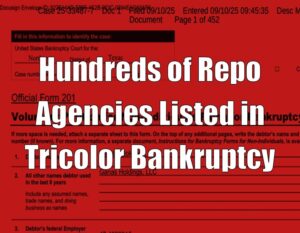Guest Editorial
Manassas, VA – 31 July 2013 – Growing up I can remember my dad spending his nights after work and weekends on our gravel driveway with his feet poking out from underneath his black 1965 Ford Mustang with cherry red interior. I would hold the old grease covered light for him and try to be more helpful than in the way…I’m not sure I always succeeded. What’s the point behind this trip down memory lane you may ask? Well for many, many years just like I’m sure many of you have done, my dad did his own repairs. They may not have gotten done as quickly as they could have been done in the shop, but with my dad doing the work, the cost was parts…not labor (and parts were a lot cheaper back then). Fast forward to vehicles manufactured in the 90s and 2000s and now much of the work can’t be done in your driveway or garage because many things are computerized and much more complicated and technical in nature; resulting in higher costs in both the parts and labor departments. Just think of the difference in price between a regular key and a transponder key and you’ll get my drift.
















Facebook Comments